In the late nineties, I was involved in the idea of creating a database driven website, featuring all the towns in Western Australia. Each page on the website had attractions, places to eat, places to stay and more. It ended up being hundreds of pages, very quickly. This was a great project, and it ended up evolving into a glossy magazine and still continues to this day.
Nowadays, what I was doing way back in the late nineties has a name; Programmatic SEO.
So what is programmatic SEO? Well, the concept is pretty simple, and you’ve already encountered it a zillion times, probably without even being aware of it.
What is Programmatic SEO?
Programmatic SEO, known also as pSEO, is where a website owner or brand creates hundreds, even thousands or millions, of pages that look like they have been individually created, however are using a data set and standardised template. The typical purpose for this, is to appear higher in search results for lower competition phrases.
For example, ranking for the phrase ‘cars for sale Australia’ is going to be tough work. An easier phrase, although searched less, would be ‘Tesla cars for sale in Tasmania’. Now, if we combined all the different car manufacturers, with each state in Australia, we could theoretically rank high for lots of longer phrases.
A fantastic example of programmatic SEO is the huge travel website, TripAdvisor, and their millions of city landing pages. Here’s an example of two of them…
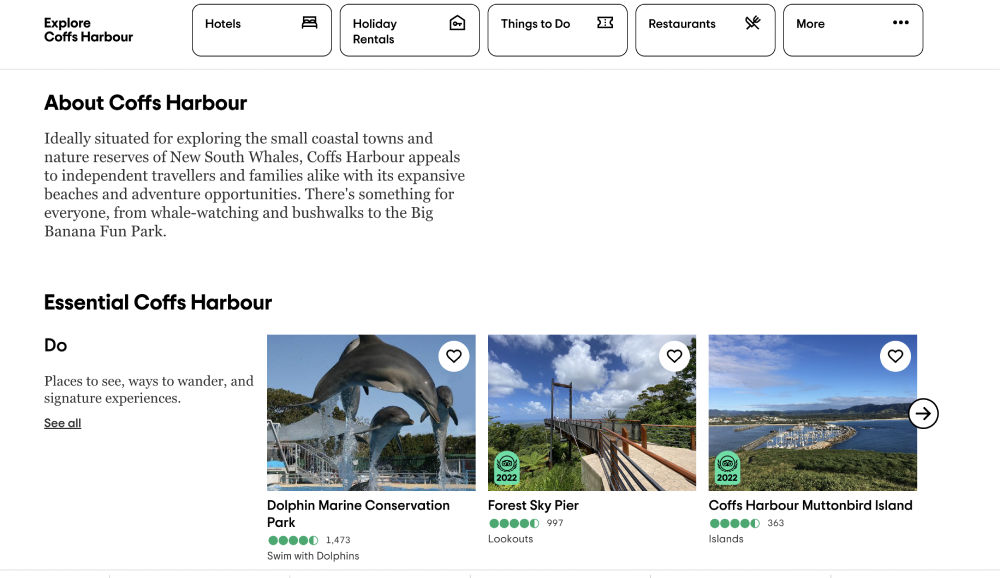
The page above is what you find when you search for Coffs Harbour related travel phrases.
Now the page below is what you can find in search results for travel queries around Margaret River in Western Australia.
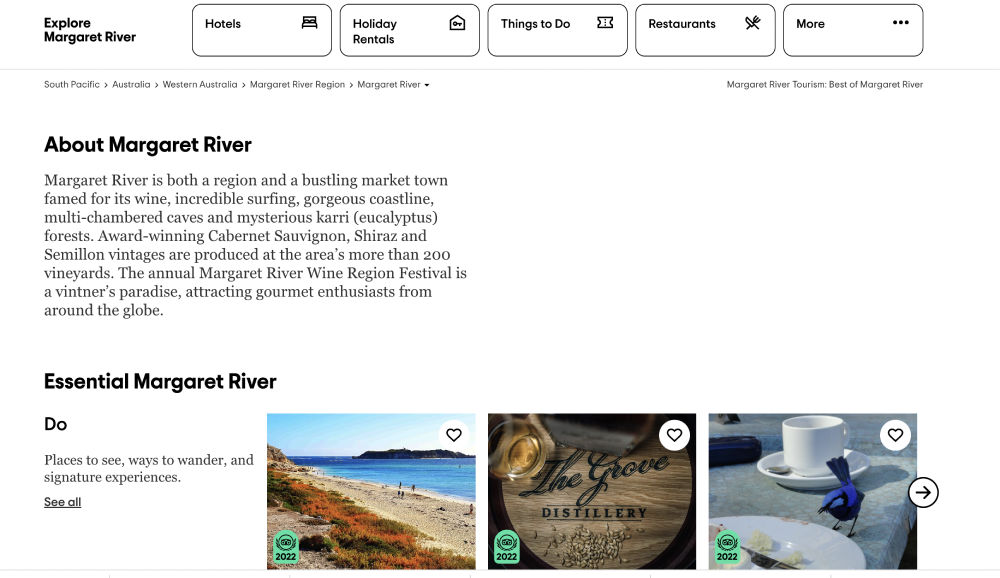
Looking at these two screen shots, you can plainly see the overall page layout and headings etc all follow a standard template. Content such as the area name (Coffs Harbour or Margaret River) has been inserted dynamically, and they both have a short area description as well.
How well does it work for them? Well, the numbers don’t lie.
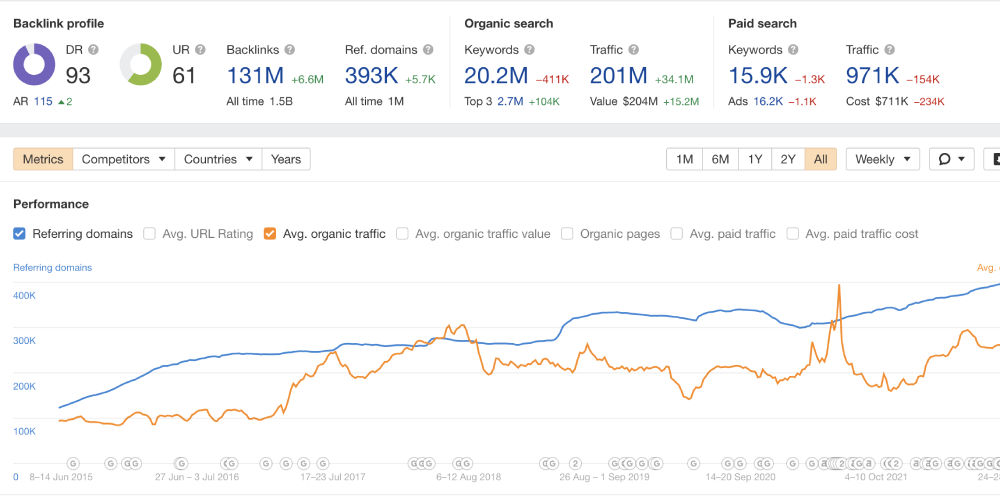
Over twenty million organic keywords would suggest that this strategy of theirs works very well. Digging deeper, you can find that so many of their pages are programmatic in a similar way.
The big benefit of programmatic SEO is ranking for many smaller keywords, with less search volume and less competition, than the bigger phrases. It’s like a long tail strategy on steroids in a way.
The benefit here is if Google moves your position for the huge keyword you have, then it’ll hurt your website traffic in a big way. However, if you rank for thousands of smaller terms, and they change a few of them, you’ll barely notice at all.
That phrase all your eggs in one basket comes to mind. You should consider spreading them out across many, many baskets instead.
Programmatic SEO example
So, here’s how it works. Imagine writing a page or a blog post on a topic with a wide variety of products or items. This is where you add lots of variables.
Let’s say you want to sell your special soil conditioner. You can significantly increase your chance of having people arrive at your website, if you were to start ranking for phrases such as;
- How to grow Celery in Perth
- How to grow Sunflowers in Adelaide
- How to Grow Lettuce in Hobart
You get the idea.
This is where programmatic SEO steps into the forefront. You start the process by creating a spreadsheet or database with as many details about growing celery, sunflowers and lettuce.
You could include data in columns, such as;
- Best month to plant
- How often to water
- What sort of soil it prefers
- How tall it gets
- When can you harvest it
- Etc etc
Assuming you are listing 100 plants, and that the actual processes don’t really change between cities (I’m no gardener, however maybe only soil conditions and temperate months are the variables)?
So, start a Google Sheet or spreadsheet, and start populating it with as much data as you can imagine you could use. TIP: Collecting more data than less is ideal. You don’t want to have to start your research all over again.
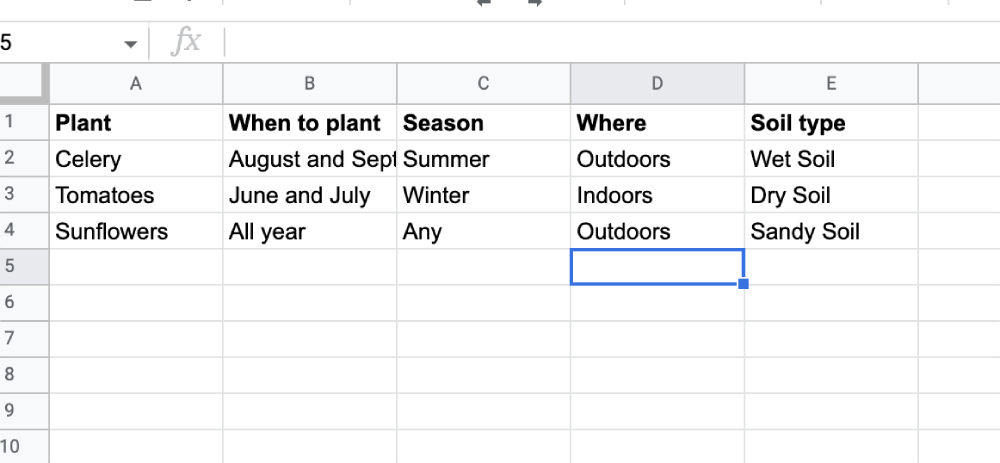
Now, once you have populated that spreadsheet with details on all 100 plants, you then need to create a list of the top 100 Australian cities.
Now, with your 100 plants and 100 cities, you have the potential to have 10,000 unique landing pages (100 plants x 100 cities = 10,000 combinations).
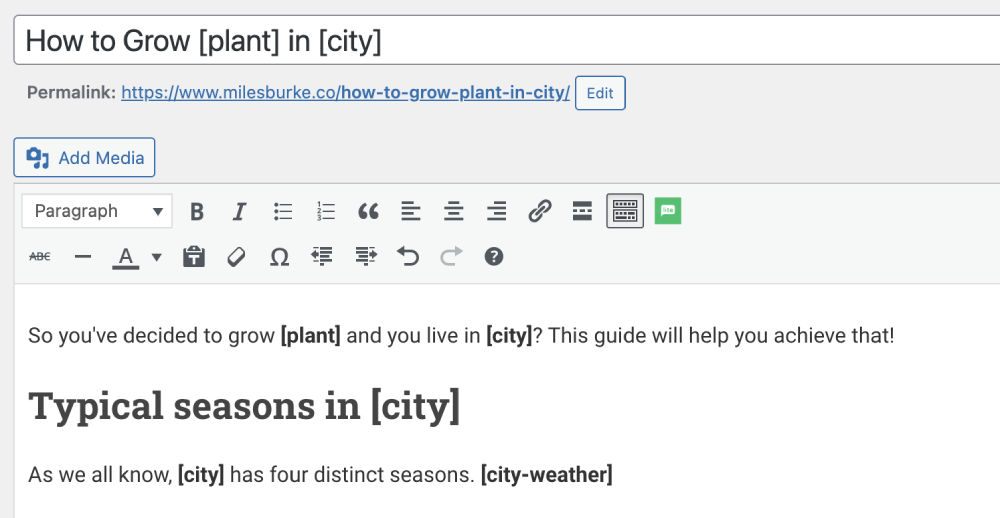
Now imagine creating a 1,000 word article full of variables like the above image?
Great programmatic SEO examples
Besides Tripadvisor and the well known sites, here is a list of other sites that serve as great examples of programmatic SEO.
- WorldPopulationReview.com
- Zapier (for example Connect your Calendly to Google Sheets integration in 2 minutes | Zapier)
- Name Census
- World Postal Code
- Integrations
- Why Crisp is the best alternative to your customer service software?
- How to File Bankruptcy for Free in New York (2022 Guide)
- The Marketplace for Pre-IPO Equity
- Florida Demographics
- LocalFlourish
There are many others out there too, once you are aware of what you are looking for, they become easier to spot.
Programmatic SEO mistakes
There’s a bunch of mistakes that many people encounter when they see programmatic SEO as some golden solution to every issue.
Thin content
Google expressly forbids ‘doorway pages’ and what they call ‘thin content’. If you have a page with 120 words on it, then that’s what they consider thin content. Ideally, you should aim for at least 500 words, or at least more than 300 words per page.
Spammy keyword ratio
Say we are talking Coriander. If your content reads ‘Coriander is great because Coriander grows as fast as Coriander, etc etc’ then you are over optimising. You should aim for say one phrase in every 70-100 words, not any more.
Duplicate content
Let’s say you have a template that you are swapping out a few simple words. The rest of the page, let’s say 300 words, is exactly the same as every other programmatic page. OK, that’s going to hit you with a duplicate content penalty.
Take another look at the TripAdvisor example above; there’s barely any words that are repeated between each city landing page. That’s what you should try to aim for.
Publishing too fast
Google has a crawl budget for every website, especially new ones. Going from say 10 pages to 10,010 pages in one week is likely to cause Google’s bot to stop in its tracks. You are better off publishing a few hundred pages a week or however Googlebot keeps up with.
Programmatic SEO case studies
Don’t just take this article as gospel either; here are a few really interesting programmatic SEO case studies to read up on;
Programmatic SEO: how to create 300 landing pages in a week
Programmatic SEO Strategy Zapier Used to Reach $140M ARR
Creating bulk pages in WordPress
In this section, I am going to take you through step by step how to create a bunch of programmatic pages using WordPress and a plugin, called WP All Import.
Note: If you aren’t using WordPress, or don’t like the technical nature of the following instructions, try this great app, Page Factory, which was literally built for programmatic SEO website creation. The Page Factory founder, Allison Seboldt, even has a free course on programmatic SEO which is full of value – I’ve watched the whole course myself.
Let’s go back to our plants and Australian cities example, above. First, you need to create a spreadsheet with your plants all listed. Then, you need to think about what data you could collect.
- Plant name
- Sunlight
- Soil preparation
- Sowing seed
- Planting
- Care
- Watering
- Feeding
- Mulching
- Harvesting
Create these as columns and then go out, and find the information and write it in the various cells.
Once you have enough content, then you can move to creating the template you’ll use within WP All Import.
Start by ensuring each column has a simple name, and then export it as a CSV file.
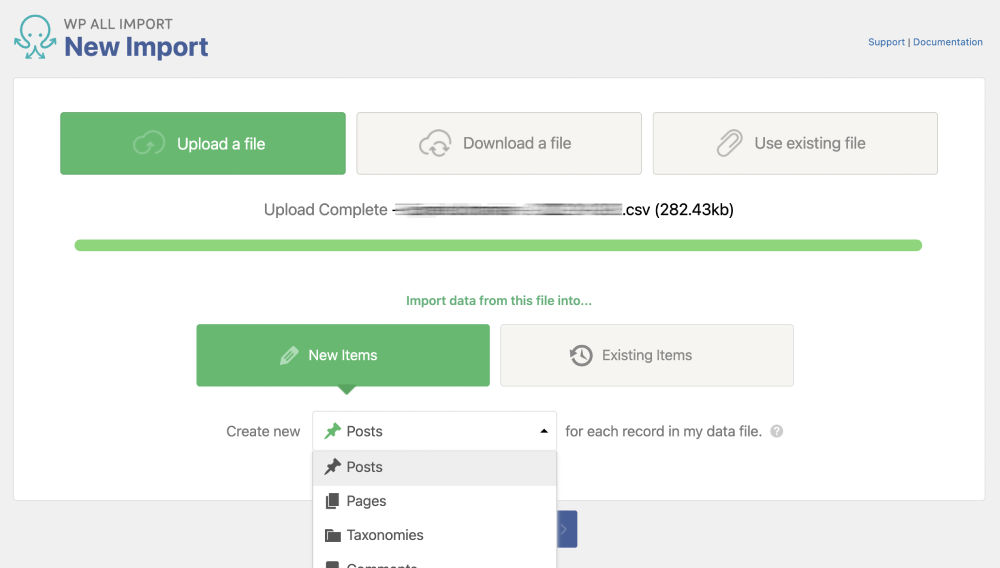
Now open WP All Import, and choose ‘New Import’. You can then select Posts or Pages, and start the process of uploading your CSV file and creating a page template.
After you have uploaded your CSV file, you’ll get to the next screen, when you’ll have the opportunity to create your page or post template.
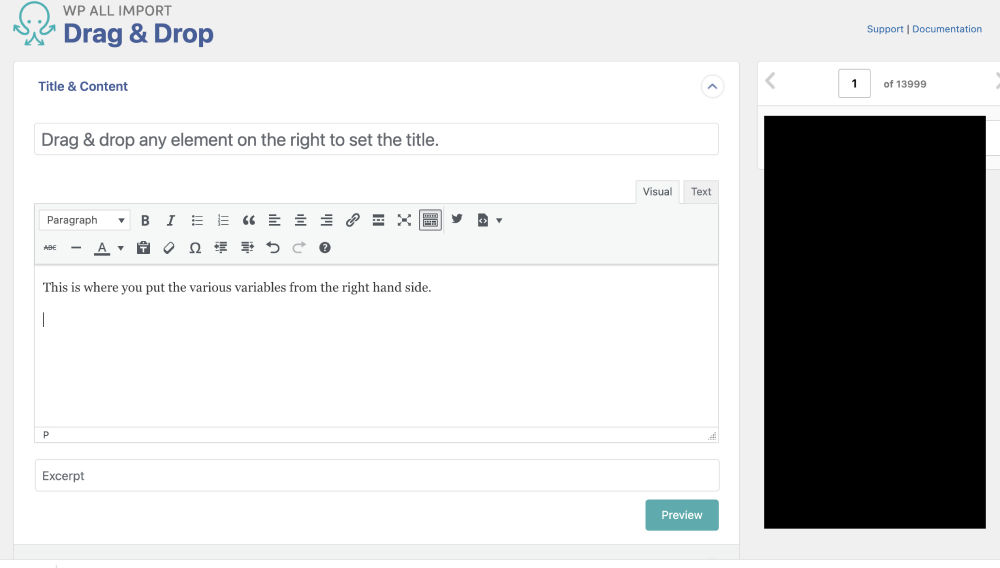
Simply drag the variables from the right hand side (where the black box in the above image is) to the correct spots within the template.
You can even swap to HTML view, and have images and code change per page as well.
I recommend you start with a handful of articles to publish first, just to check it is all working as planned. Remember to adjust the slug URL, the article title, etc as well.
As an example of what to expect, the below graphic shows progress of page indexing over the first six weeks on my brand new niche website. I have started trickling out the programmatic SEO pages, instead of 100+ new pages per week, I am now scheduling them to publish at around 30 pages per week.
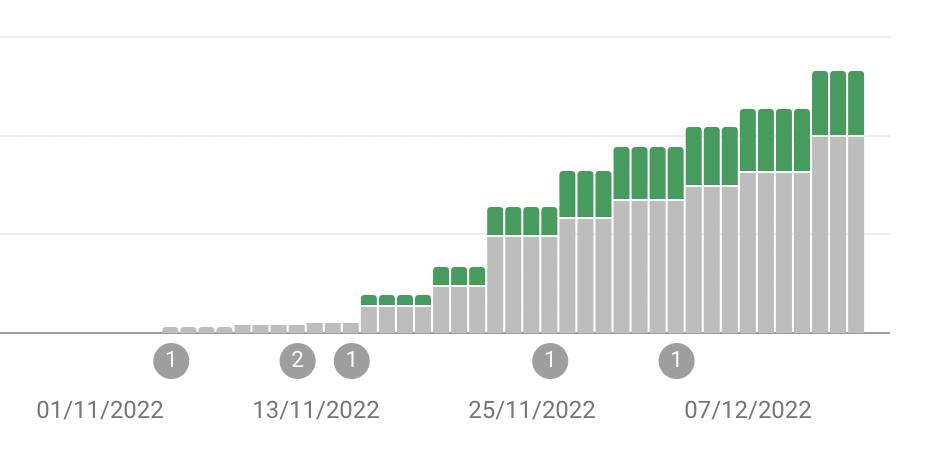
Programmatic SEO checklist
Before you go overboard and start publishing hundreds or thousands of pages, make sure to double check everything against this checklist.
Content is helpful and unique
I cannot understate this. Each page needs to be as unique as possible, and the content needs to be genuinely helpful to human visitors. If you are creating a zillion pages to just trick Google, you’ll absolutely fail.
Your website is in Google Search Console
GSC is the absolute truth when it comes to any issues or feedback from Google. If you don’t have your site included in Google search console, you are really just flying blindly.
Each page contains mostly unique content
Tough news. The more unique each page is, the more likely Google will index it and you’ll rank well. Just changing 10% of the content is NOT programmatic SEO, it’s just lazy.
In fact, on one website I have used this technique on, has 88 individual snippets of content making up each page. I’ve even created a featured image that is unique for every single page. It’s a lot of work on a 500 page website, but that’s what it takes to rank well.
Valid XML sitemap created
Always ensure that you are only including indexable, 200 HTTP response code URLs in any sitemaps you are submitting to Google. You should always double check there are no errors, as this will definitely affect your website’s crawl efficiency.
Keywords aren’t overdone
If you over saturate your website content with too many target keywords, you will likely get a webspam penalty pretty quickly. I would suggest no more than 2-3%, or 2-3 times per 100-200 words of content.
Remember that you can always update your spreadsheet and republish pages at will in the future too.
Interlinking throughout various pages
This is a must. The best way to ensure every page gets crawled, and users get the benefit of internal linking, is to link between internal pages wherever possible.
This is best done within the content. For example, in that plants example, you could mention ‘similar to Carrots’ and have the word Carrots link to the carrots page.
In Summary
Programmatic SEO is certainly a great way to start ranking for hundreds of low competition, low search volume keywords.
As I mentioned earlier, the whole eggs in a basket idiom applies here. You are better off with many keywords rather than putting all your focus on one big money phrase.
While it may seem easy, and very set and forget, it really shouldn’t be. You want lots of data and lots of custom content on every page. It needs to look like it isn’t templated where possible.








